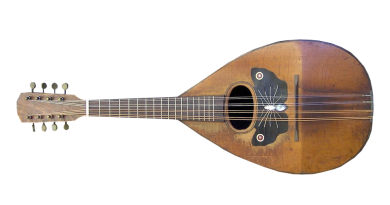Mastering Nursery Rhyme Guitar Chords: The Ultimate Guide
Mastering Nursery Rhyme Guitar Chords: The Ultimate Guide
Nursery rhymes are a timeless tradition that have been passed down from generation to generation. These simple and catchy songs are perfect for teaching children important lessons and concepts in a fun and engaging way. As a guitarist, mastering nursery rhyme guitar chords can be a valuable skill to have in your repertoire. In this ultimate guide, we will break down the basics of playing nursery rhymes on the guitar and provide you with tips and tricks to help you master these classic songs.
Understanding Basic Guitar Chords
Before we dive into specific nursery rhyme guitar chords, it is important to have a basic understanding of guitar chords. Chords are a combination of three or more notes played simultaneously to create harmony. The most common chords in music are major, minor, and seventh chords. Major chords have a happy and uplifting sound, while minor chords have a sad or somber feel. Seventh chords add extra depth and richness to a chord progression.
When playing nursery rhymes on the guitar, you will typically use simple major and minor chords. These chords are easy to play and provide a solid foundation for accompanying children’s songs. Some common nursery rhyme guitar chords include C, G, D, and A.
Tips for Playing Nursery Rhyme Guitar Chords
1. Practice proper hand positioning: When playing guitar chords, it is important to have proper hand positioning to ensure clean and accurate notes. Make sure your fingers are placed directly behind the frets, and use the tips of your fingers to press down on the strings. Avoid muting adjacent strings with your fingers and keep your wrist straight to prevent strain.
2. Memorize chord shapes: Memorizing common guitar chord shapes will make it easier to transition between chords when playing nursery rhymes. Focus on learning the finger placements for chords like C, G, D, and A, as these are commonly used in children’s songs. Practicing chord transitions regularly will help you build muscle memory and improve your playing speed.
3. Use a capo: A capo is a helpful tool that allows you to change the pitch of the guitar without adjusting the chord shapes. This can be especially useful when playing nursery rhymes, as it allows you to easily transpose the song to a key that suits your voice or the preference of the children you are playing for. Experiment with different capo positions to find the best key for each nursery rhyme.
4. Play along with recordings: Listening to recordings of nursery rhymes and playing along with the music can help you develop a sense of timing and rhythm. Pay attention to how the chords fit within the song structure and try to match the tempo and feel of the original recording. Playing along with recordings can also help you internalize the melody and lyrics of the nursery rhyme.
5. Experiment with strumming patterns: Adding different strumming patterns to your nursery rhyme guitar chords can bring new life to the songs. Try using a combination of downstrokes, upstrokes, and percussive strums to create a rhythmic and dynamic accompaniment. Experiment with strumming patterns that match the feel of the nursery rhyme – for example, a light and bouncy strumming pattern for a playful song or a slow and steady strum for a lullaby.
Nursery Rhyme Guitar Chords
Now that you have some tips for mastering nursery rhyme guitar chords, here are a few classic nursery rhymes and the corresponding chords to get you started:
1. “Twinkle, Twinkle, Little Star”
Chords: C, F, G, G7
2. “The Itsy Bitsy Spider”
Chords: C, G, Am, F
3. “Row, Row, Row Your Boat”
Chords: C, F, G
4. “Mary Had a Little Lamb”
Chords: C, F, G
5. “Old MacDonald Had a Farm”
Chords: C, G, D
Practice these nursery rhyme guitar chords regularly to improve your playing skill and build your repertoire of children’s songs. Remember to have fun and enjoy the process of learning and playing these classic tunes on the guitar.
In conclusion, mastering nursery rhyme guitar chords is a rewarding skill that can bring joy and entertainment to children and adults alike. By understanding basic guitar chords, practicing proper hand positioning, and experimenting with strumming patterns, you can enhance your playing and create memorable musical experiences. Use this ultimate guide as a resource to help you navigate the world of nursery rhymes on the guitar and unleash your creativity and musical talent. Happy strumming!






